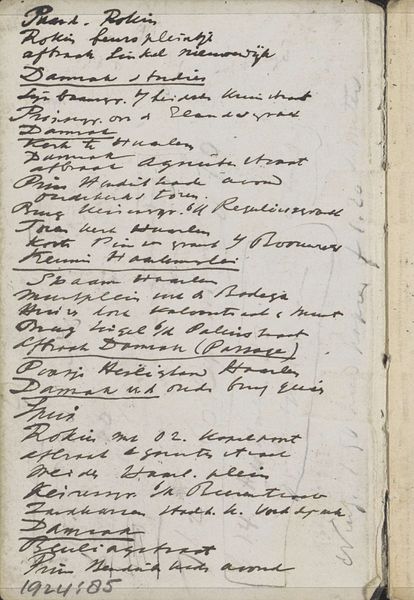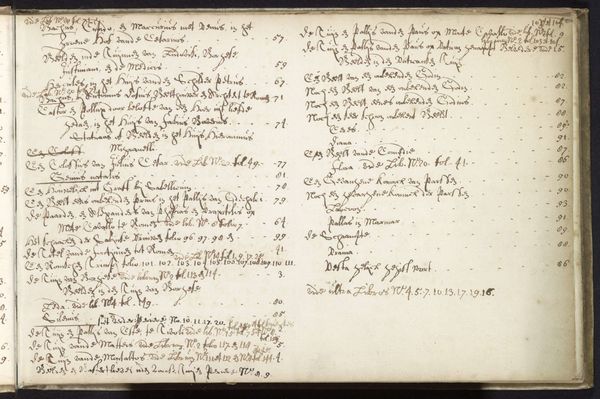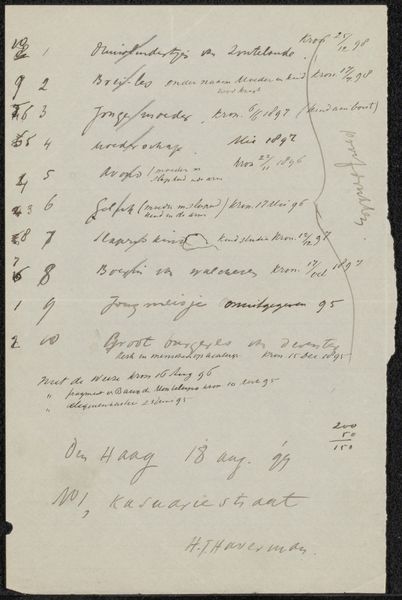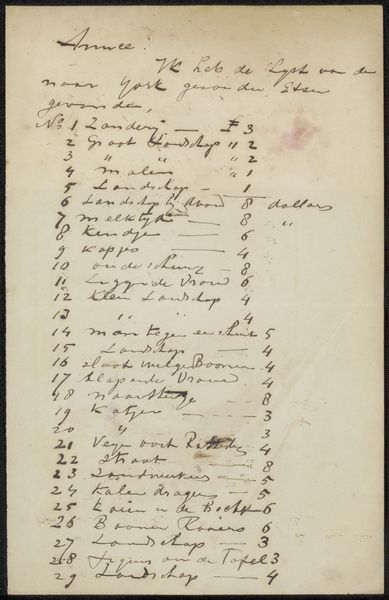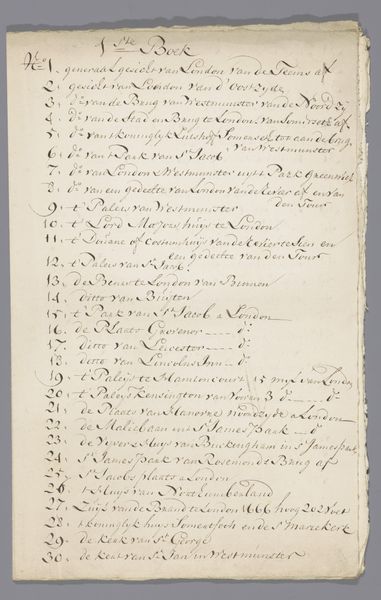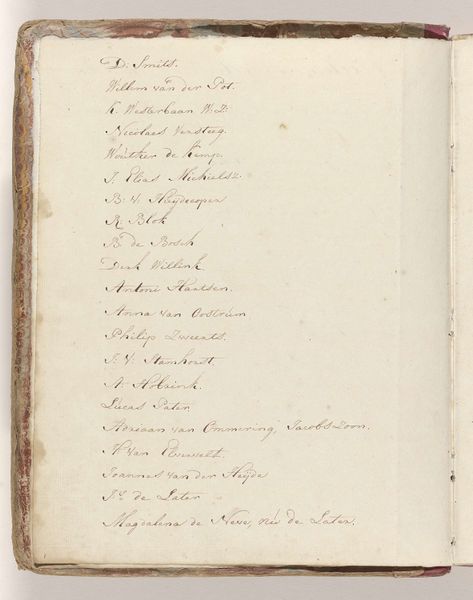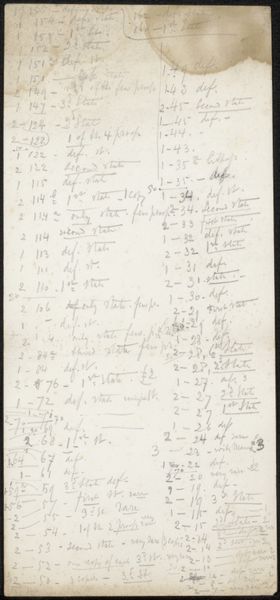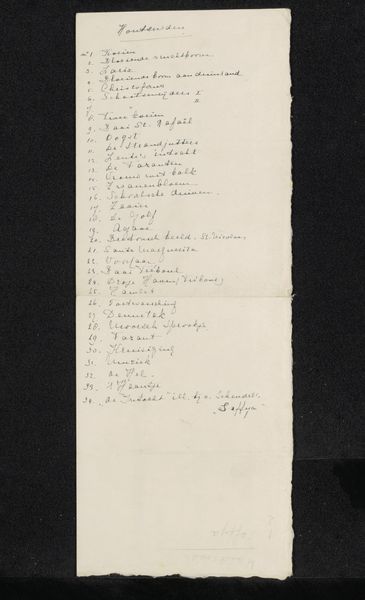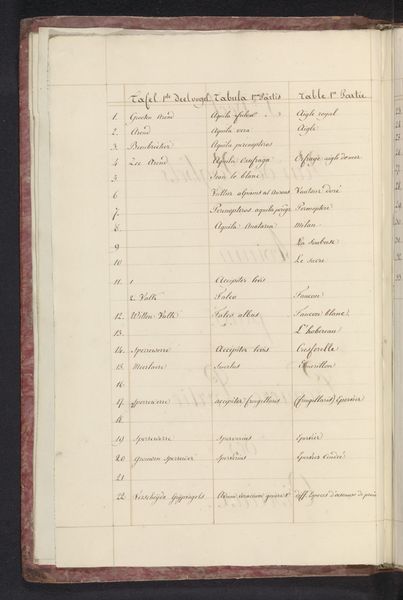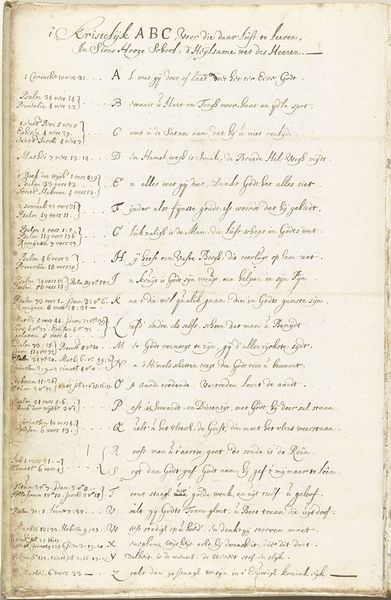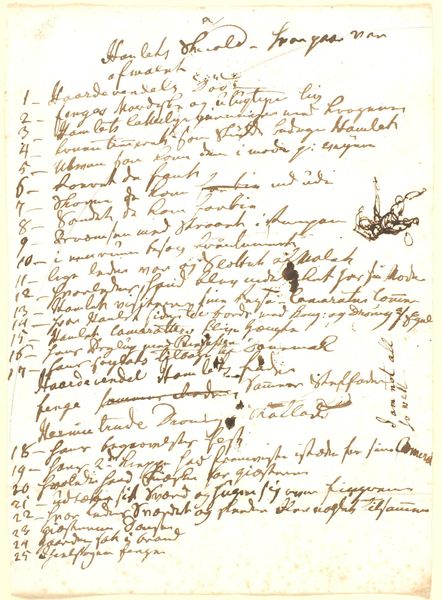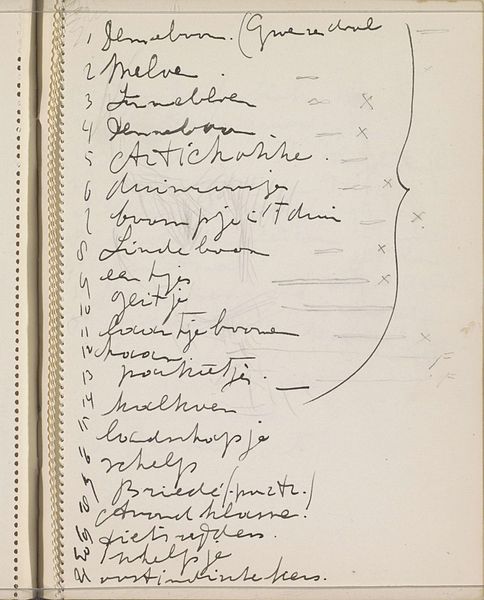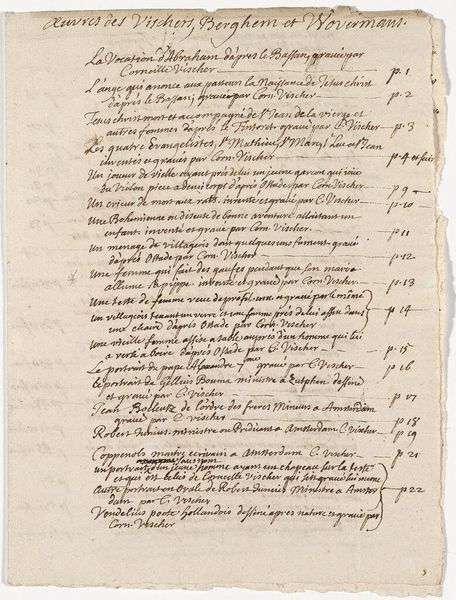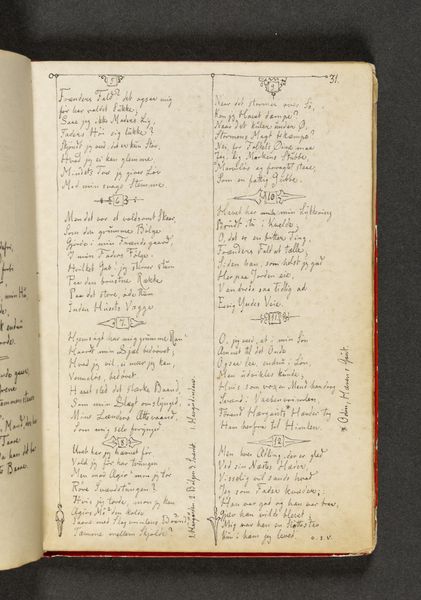
Schetsboek met 41 gekleurde tekeningen van de monteringen van de gewapende schutterijen en burgercorpsen in Nederland, 1789 1789
0:00
0:00
drawing, mixed-media, paper, ink
#
drawing
#
mixed-media
#
narrative-art
#
dutch-golden-age
#
paper
#
ink
#
watercolor
Dimensions: height 225 mm, width 150 mm, thickness 12 mm, width 301 mm
Copyright: Rijks Museum: Open Domain
Curator: Today we're looking at "Schetsboek met 41 gekleurde tekeningen van de monteringen van de gewapende schutterijen en burgercorpsen in Nederland, 1789", created anonymously in 1789. It’s a sketchbook containing 41 mixed-media drawings of armed civic guard uniforms and corps in the Netherlands. Editor: Immediately, I see order, discipline. A neat listing, like a roll call. It’s not chaotic, it's deliberate and a little austere. Reminds me of bookkeeping, or a well-organized military manifest. Curator: Indeed. It's on paper, utilizing ink and watercolor, so mass production isn't the point here. Each drawing carefully documents details of attire and arms, offering a glimpse into the social and material realities of civic identity during that era. These citizen militias held considerable social and political significance. Editor: It feels inherently Dutch in its meticulous detail, this attention to order. I imagine crisp uniforms, starched collars...but what story is it whispering beyond its structured format? The personal hand seems subdued, doesn't it? More a recording device. Curator: Think about the act of documenting. It solidifies the power, makes it tangible. Also, remember the Dutch Golden Age wasn't that far removed at this point. Craftsmanship and material pride would have been deeply embedded in their cultural production. Editor: And yet, this isn't displayed as high art in the traditional sense. It lacks bravado and theatricality; its focus remains deeply rooted in the fabric of everyday life. It's the quiet assertion of middle-class capability. Curator: Precisely! The work blurs boundaries between documentary and artistic production. Who produced it, and for whom, are crucial. The material itself — paper, ink, watercolor – was increasingly available, signifying a change in art’s production and consumption. Editor: So we aren’t looking at portraits meant to flatter, but representations for understanding—possibly even for mobilization. I'm starting to perceive something practical alongside the artistic endeavor. There is intent and, of course, social currency attached to those civic societies. Curator: Right, it reflects a society invested in its local defense, a world away from the battles fought by kings. The medium tells that part of the story too. Editor: What began for me as a quiet observation opens up to speak about power, craft, and citizen engagement. Quite unexpected. Curator: The beauty of examining such work lies in uncovering the connections between material realities and social identity.
Comments
No comments
Be the first to comment and join the conversation on the ultimate creative platform.
